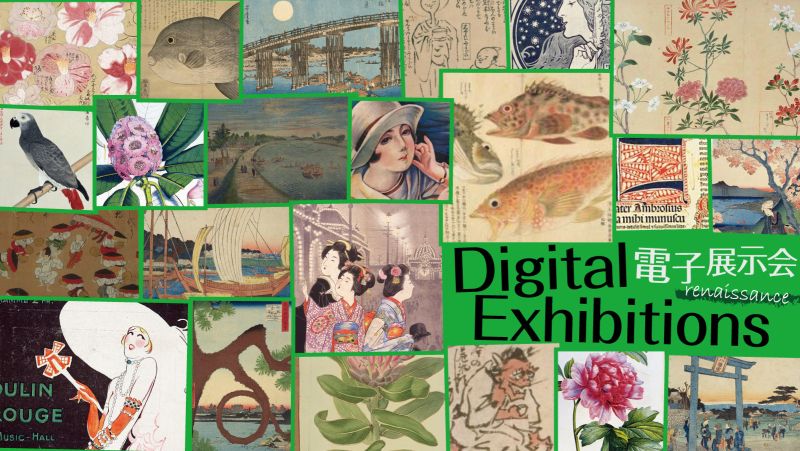Climbing Mount Fuji and Fujizuka

Mount Fuji has been depicted in waka (poems) and paintings for its beautiful appearance and scenery and is known as a popular subject for artistic works. In 2013, it was registered as a World Heritage Site. However, as a fearsome active volcano that has erupted repeatedly, Mount Fuji was also an object of worship and reverence for people.
The opening of Mt. Fuji for climbing season is on June 1 of the lunar calendar (now July 1). This web page will introduce you to how the people of Edo climbed Mount Fuji in awe.
Mount Fuji is a volcano that has repeatedly erupted. In particular, during the great eruption of 1707 (Hoei 4), the traffic on various highways, including the Tokaido, became difficult due to cracks in the ground, sinkholes, the emergence of underground water, and landslides. Volcanic ash also accumulated throughout the Kanto region. The practice of Fujiko became popular to calm the eruptions of Mount Fuji and worship it with reverence.
In KATSUSHIKA Hokusai's “Fugakusanjuurokei Shonintozan” (Thirty-six Views of Mount Fuji: Groups of Mountain Climbers) and “Fugaku hyakkei” (One Hundred Views of Mount Fuji), there are depictions of people in white clothing waiting for the sunrise in a rock cave near the summit, resting on the rocky terrain and walking with kongo-zue on the rocky terrain.
Due to Fujiko, lodging facilities were built at the trailhead of Mount Fuji and pilgrimages there became more common, with climbing the mountain becoming a form of recreational travel. Fujiko participants also enjoyed sightseeing along the way. These scenes can be seen in nishiki-e woodblock prints depicting the pilgrimage to Fuji, as well as in books describing the journey.
Many Fujizuka mounds were also constructed throughout Edo for people who were unable to make the pilgrimage to Mount Fuji.
A Fujizuka is a small man-made mound built using lava from Mount Fuji. Fujizuka were used as a place for worshipping Mount Fuji from a distance or as a site for proxy climbing. Fujizuka mounds were built in various places around Edo, and were also depicted in nishiki-e.
Meguro Shin-Fuji and Meguro Moto-Fuji, famous landmarks in Edo, offer magnificent views due to their geographical location, and the actual Mount Fuji can be seen in the distance. Moto-Fuji was built in 1812 (Bunka 9), while Shin-Fuji was built in 1819 (Bunsei 2).
The Mount Fuji pilgrimage and Fujiko, which were popular during the Edo period, have declined since the end of World War II, and the management of Fujizuka has been neglected. However, Fujizuka called the Edo Nana (seven) Fuji still remain today.
References
- 竹ノ内洋一郎 著, "江戸の富士塚を歩く : 東京・近郊の富士塚ガイド" (オフィスHANS 2022)
(TAKENOUCHI Yoichiro, Edo no Fujizuka wo aruku: Tokyo kinko no Fujizuka gaido, OficceHANS, 2022) - H・バイロン・エアハート 著 et.al, "富士山 : 信仰と表象の文化史" (慶應義塾大学出版会 2019)
(H. Byron Earhart et.al, Fujisan:Shinko to hyosho no bunkashi, Keiogijuku daigaku shuppankai, 2019) - 東京都神社庁教学委員会富士信仰研究部会 監修, "大江戸のお富士さん : 富士信仰と巡る富士塚" ([東京都神社庁教学委員会富士信仰研究部会] 2017)
(Tokyoto jinjacho kyogaku Iinkai Fujishinko kenkyubukai, Oedo no Ofujisan: Fuji shinko to meguru Fujizuka), Tokyoto jinjacho kyogaku Iinkai Fujishinko kenkyubukai, 2017 - [静岡県立美術館・山梨県立博物館] 「富士山-信仰と芸術-」展実行委員会 編, "富士山 : 信仰と芸術 : 特別展" (「富士山-信仰と芸術-」展実行委員会 2015)
(Shizuoka kenritsu Bijutsukan, Yamanashi kenritsu Hakubutsukan, Fujisan: shinko to geijutu: Tokubetsuten, "Fujisan shinko to geijutsu ten" jikko Iinkai, 2015)
